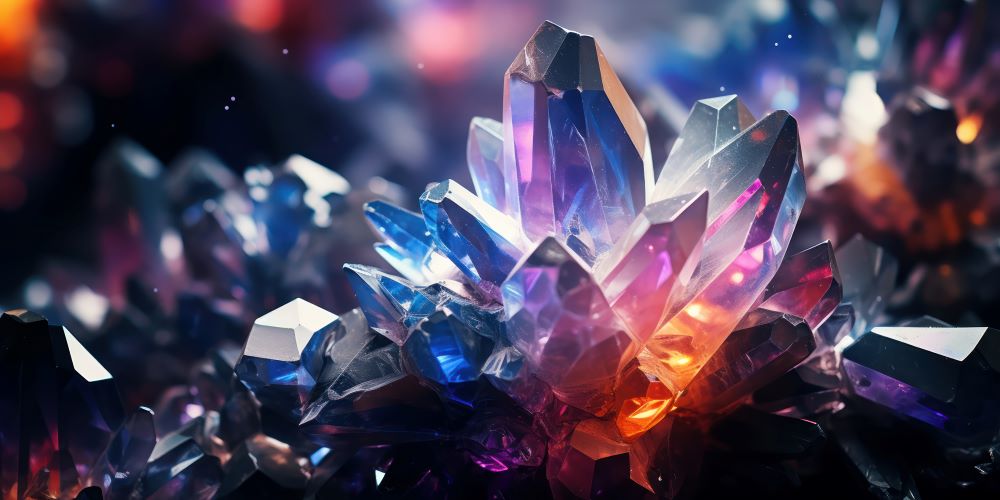Unveiling the Mysteries of Gemology: A Comprehensive Exploration
Introduction

Gemology, the captivating science and art of studying gemstones, is a field that has been intertwined with human history for centuries. From the allure of sparkling diamonds to the mesmerizing hues of colored gemstones, the world of gemology is as diverse and fascinating as the gems themselves. In this article, we will delve into the multifaceted realm of gemology, exploring its history, significance, methodologies, and the various gems that have captured the hearts of people throughout the ages.
The History of Gemology

The roots of gemology can be traced back to ancient civilizations where gems were not only prized for their beauty but also believed to possess mystical and healing properties. The Egyptians, for instance, adorned themselves with gemstones like lapis lazuli and turquoise, attributing them with protective and spiritual qualities. Similarly, the Greeks and Romans revered gemstones such as amethyst and sapphire, associating them with gods and symbols of power.
However, it was not until the Renaissance that gemology began to take a more scientific and systematic approach. During this period, gemstones gained popularity as symbols of wealth and status, leading to increased demand. To meet this demand, gem merchants and lapidaries sought to distinguish genuine gemstones from imitations. This marked the emergence of early gemological studies, with pioneers like George Kunz and Max Bauer making significant contributions to the field.
The Birth of Modern Gemology

The 20th century witnessed the establishment of gemology as a formal scientific discipline. One of the key figures in this development was Richard T. Liddicoat, who played a pivotal role in the foundation of the Gemological Institute of America (GIA) in 1931. The GIA, with its emphasis on research, education, and standardized gemstone grading systems, revolutionized the way gemstones were studied and valued.
Modern gemology incorporates a combination of scientific principles and practical skills to identify, grade, and appraise gemstones. Gemologists utilize a range of tools, including microscopes, refractometers, spectrometers, and other specialized equipment, to examine the physical, optical, and chemical properties of gemstones. These examinations help determine the gem’s authenticity, origin, and quality.
The Importance of Gemology

Gemology serves several crucial purposes in the world of gemstones and jewelry. One of its primary roles is to provide consumers with confidence and assurance when purchasing gemstone jewelry. By employing rigorous testing and grading standards, gemologists help ensure the transparency and integrity of the gemstone market.
Gemology also plays a vital role in the preservation and promotion of cultural heritage. Many gemstones have historical and cultural significance, and gemologists contribute to the understanding and documentation of these gems. Through their expertise, they can authenticate historical gemstones, shedding light on their origins and stories.
Furthermore, gemology contributes to the advancement of scientific knowledge. Studying gemstones allows scientists to gain insights into Earth’s geological processes, as many gems are formed deep within the Earth’s mantle. The study of inclusions within gemstones, for example, provides valuable information about the conditions under which they were created.
Key Concepts in Gemology

Gemology encompasses a wide array of concepts and techniques. To gain a deeper understanding of this field, let’s explore some fundamental aspects:
- Gemstone Identification:
- Color: The color of a gemstone is a critical factor in its identification. Gemologists assess hue, tone, and saturation to describe and categorize colors accurately.
- Clarity: Clarity refers to the presence of internal and external imperfections, known as inclusions and blemishes, respectively. The fewer the flaws, the higher the clarity grade.
- Cut: The cut of a gemstone influences its brilliance and overall appearance. Gemologists evaluate the quality of the cut based on factors like proportions, symmetry, and polish.
- Gemstone Properties:
- Hardness: Gemologists use the Mohs scale to measure a gemstone’s hardness. This scale ranges from 1 (softest) to 10 (hardest), with diamonds being the hardest at 10.
- Refractive Index (RI): The refractive index measures how much light is bent, or refracted, as it passes through a gemstone. Different gemstones have distinct refractive indices.
- Specific Gravity: This property helps distinguish between different gem materials by comparing the weight of a gemstone to an equal volume of water.
- Gemstone Formation:
- Magmatic: Some gemstones, like diamonds, are formed deep within the Earth’s mantle through magmatic processes. They are brought closer to the surface during volcanic eruptions.
- Metamorphic: Gems like sapphires and rubies can result from the metamorphism of existing rocks. High pressure and temperature cause mineral changes, leading to the formation of these gems.
- Sedimentary: Certain gemstones, including opals, are formed through the accumulation and solidification of mineral and organic particles in sedimentary environments.
- Synthetic Gemstones:
- Advances in technology have led to the creation of synthetic or lab-grown gemstones that closely mimic their natural counterparts. Gemologists must be adept at distinguishing between natural and synthetic gems using various testing methods.
- Gemstone Treatments:
- Many gemstones undergo treatments to enhance their color or clarity. Heat treatment, for instance, is common for improving the color of sapphires, while oiling may be used to fill surface-reaching fractures in emeralds. Gemologists play a crucial role in disclosing such treatments to buyers.
The Fascinating World of Gemstones

- Diamonds:
- Diamonds, the epitome of luxury and romance, are composed of carbon atoms arranged in a crystal lattice. Their exceptional hardness and brilliance have made them coveted symbols of enduring love. The “Four Cs” (color, clarity, cut, and carat weight) are essential considerations in diamond evaluation.
- Rubies:
- Rubies, a variety of corundum, are prized for their intense red color, often associated with passion and vitality. Chromium is the key element responsible for their vibrant hue. Myanmar, historically known as Burma, is renowned for producing some of the world’s finest rubies.
- Sapphires:
- Sapphires, also members of the corundum family, exhibit a spectrum of colors, with blue sapphires being the most sought after. These gems symbolize wisdom, loyalty, and nobility. Sapphires from Kashmir are celebrated for their velvety blue hue.
- Emeralds:
- Emeralds, a type of beryl, are prized for their rich green color. Symbolizing rebirth and fertility, emeralds are often associated with lush landscapes. Colombia is a prominent source of high-quality emeralds, known for their vivid green color.
- Pearls:
- Pearls are unique among gemstones as they are produced by living organisms. Formed within mollusks, pearls are admired for their luster and natural beauty. Cultured pearls, created through human intervention, have expanded the availability of these treasures.
- Opals:
- Opals are distinctive for their play-of-color, an optical phenomenon resulting from the diffraction of light within the gem. They come in a range of colors and are often associated with creativity and inspiration. Australia is a primary source of opals, including the prized black opal.
Conclusion
Gemology, with its blend of science, art, and history, invites us into a world of enchantment and fascination. Beyond the dazzling beauty of gemstones, gemology unravels the geological mysteries, cultural tales, and scientific wonders hidden within each precious stone. As we continue to explore the depths of this captivating field, we gain not only a deeper appreciation for the gems that adorn our lives







